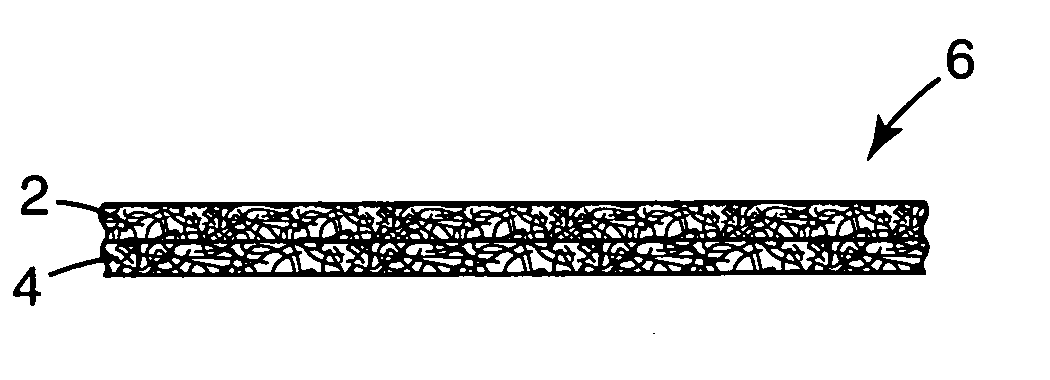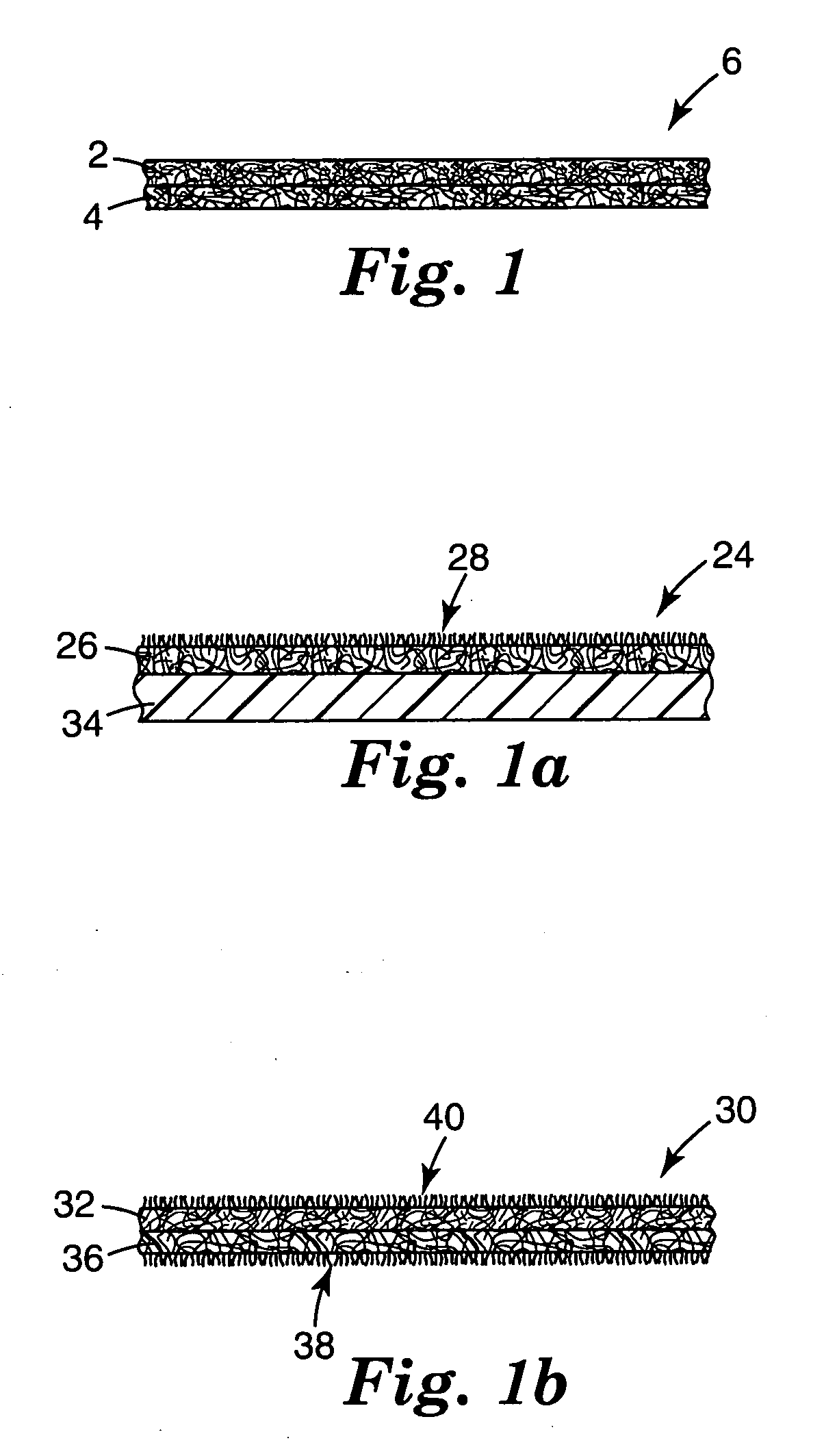Microfiber articles from multi-layer substrates
a technology of microfiber articles and substrates, applied in the field of multi-layer films, can solve the problems of little if any recognition of the potential benefits and synergies that can be achieved, and achieve the effect of more efficient and economical
- Summary
- Abstract
- Description
- Claims
- Application Information
AI Technical Summary
Benefits of technology
Problems solved by technology
Method used
Image
Examples
example 1
[0121] An “A-B-C” 3-layer cast film was prepared according to Process I using polypropylene homopolymer (Fina 3271, available from Atofina Inc., Houston, Tex.) for the A-layer melt stream, a tri-block copolymer with polystyrene end blocks and a rubbery poly(ethylene-butylene) mid block (Kraton G1657, available from Kraton Polymers, Houston Tex.) for the B-layer melt stream, and a polypropylene homopolymer (Fina 3271, available from Atofina Inc., Houston, Tex.) for the C-layer melt stream. The resulting 3-layer cast film had a thickness of 940 micrometer, a width of 241 mm, and a density of 0.9 gram / cm3.
[0122] The resulting cast film was calendered and length oriented according to Process II. The cast film was fed from an unwind station into the compressive nip of rolls 1 and 2 at a rate of 0.23 m / min. Rolls 1 and 2 each had surface speed of 0.91 m / min, a temperature of 120° C., and a gap between the rolls of 0.18 mm. Roll 3 had a surface speed of 2.97 m / min and a temperature of 120...
example 2
[0124] An “A-B-C” 3-layer cast film was prepared according to Process I using polypropylene homopolymer (Fina 3271, available from Atofina Inc., Houston, Tex.) for the A-layer melt stream, a blend of 80% polypropylene homopolymer (Fina 3271, available from ATOFINA Inc., Houston, Tex.) and 20% of an ethylene vinyl acetate copolymer (Elvax 670, available from DuPont Chemical Co., Wilmington, Del.) for the B-layer melt stream, and a polypropylene homopolymer (Fina 3271, available from Atofina Inc., Houston, Tex.) for the C-layer melt stream. The resulting cast film had a thickness of 880 micrometer, a width of 240 mm, and a density of 0.91 grams / cm3.
[0125] The resulting 3-layer cast film was calendered and length oriented according to Process II. The cast film was fed from an unwind station into the compressive nip of rolls 1 and 2 at a rate of 0.32 m / min. Rolls 1 and 2 each had surface speed of 0.91 m / min, a temperature of 100° C., and a gap between the rolls of 0.18 mm. Roll 3 had a...
example 3
[0127] An “A-B-C” 3-layer cast film was prepared according to Process I using a blend of 80% polypropylene homopolymer (Fina 3271, available from Atofina Inc., Houston, Tex.) and 20% of an ethylene vinyl acetate copolymer (Elvax 670, available from DuPont Chemical Co., Wilmington, Del.) for the A-layer melt stream, polypropylene homopolymer (Fina 3271, available from Atofina Inc., Houston, Tex.) for the B-layer melt stream, and a blend of 80% polypropylene homopolymer (Fina 3271, available from Atofina Inc., Houston, Tex.) and 20% of an ethylene vinyl acetate copolymer (Elvax 670, available from DuPont Chemical Co., Wilmington, Del.) for the C-layer melt stream. The resulting 3-layer cast film had a thickness of 920 micrometer, a width of 243 mm, and a density of 0.91 grams / cm3.
[0128] The resulting 3-layer cast film was calendered and length oriented according to Process II. The cast film was fed from an unwind station into the compressive nip of rolls 1 and 2 at a rate of 0.31 m / m...
PUM
| Property | Measurement | Unit |
|---|---|---|
| effective diameter | aaaaa | aaaaa |
| effective diameter | aaaaa | aaaaa |
| thickness | aaaaa | aaaaa |
Abstract
Description
Claims
Application Information
 Login to View More
Login to View More - R&D
- Intellectual Property
- Life Sciences
- Materials
- Tech Scout
- Unparalleled Data Quality
- Higher Quality Content
- 60% Fewer Hallucinations
Browse by: Latest US Patents, China's latest patents, Technical Efficacy Thesaurus, Application Domain, Technology Topic, Popular Technical Reports.
© 2025 PatSnap. All rights reserved.Legal|Privacy policy|Modern Slavery Act Transparency Statement|Sitemap|About US| Contact US: help@patsnap.com



